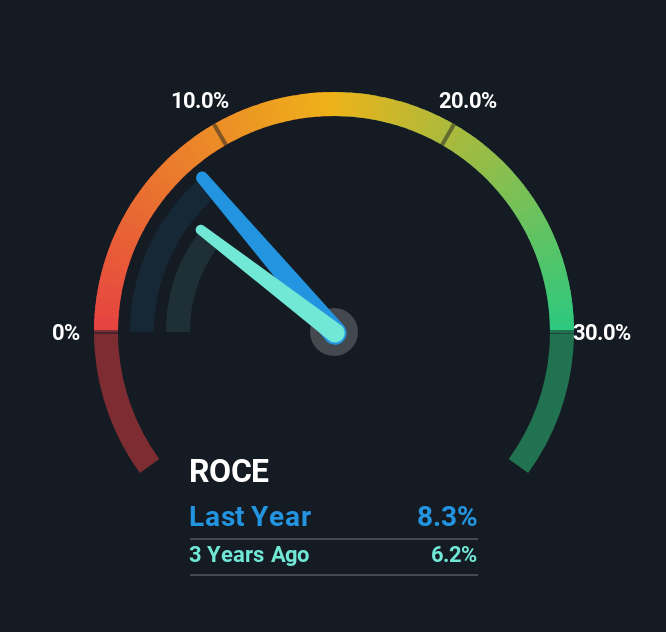- Sweden
- /
- Electronic Equipment and Components
- /
- OM:PRIC B
Slowing Rates Of Return At Pricer (STO:PRIC B) Leave Little Room For Excitement
Finding a business that has the potential to grow substantially is not easy, but it is possible if we look at a few key financial metrics. Amongst other things, we'll want to see two things; firstly, a growing return on capital employed (ROCE) and secondly, an expansion in the company's amount of capital employed. This shows us that it's a compounding machine, able to continually reinvest its earnings back into the business and generate higher returns. In light of that, when we looked at Pricer (STO:PRIC B) and its ROCE trend, we weren't exactly thrilled.
Return On Capital Employed (ROCE): What Is It?
For those that aren't sure what ROCE is, it measures the amount of pre-tax profits a company can generate from the capital employed in its business. The formula for this calculation on Pricer is:
Return on Capital Employed = Earnings Before Interest and Tax (EBIT) ÷ (Total Assets - Current Liabilities)
0.083 = kr116m ÷ (kr2.0b - kr630m) (Based on the trailing twelve months to June 2025).
Thus, Pricer has an ROCE of 8.3%. In absolute terms, that's a low return and it also under-performs the Electronic industry average of 14%.
Check out our latest analysis for Pricer

While the past is not representative of the future, it can be helpful to know how a company has performed historically, which is why we have this chart above. If you'd like to look at how Pricer has performed in the past in other metrics, you can view this free graph of Pricer's past earnings, revenue and cash flow.
How Are Returns Trending?
The returns on capital haven't changed much for Pricer in recent years. The company has employed 78% more capital in the last five years, and the returns on that capital have remained stable at 8.3%. Given the company has increased the amount of capital employed, it appears the investments that have been made simply don't provide a high return on capital.
On a side note, Pricer has done well to reduce current liabilities to 31% of total assets over the last five years. This can eliminate some of the risks inherent in the operations because the business has less outstanding obligations to their suppliers and or short-term creditors than they did previously.
The Bottom Line On Pricer's ROCE
In conclusion, Pricer has been investing more capital into the business, but returns on that capital haven't increased. Moreover, since the stock has crumbled 74% over the last five years, it appears investors are expecting the worst. On the whole, we aren't too inspired by the underlying trends and we think there may be better chances of finding a multi-bagger elsewhere.
One final note, you should learn about the 2 warning signs we've spotted with Pricer (including 1 which is a bit unpleasant) .
While Pricer may not currently earn the highest returns, we've compiled a list of companies that currently earn more than 25% return on equity. Check out this free list here.
New: Manage All Your Stock Portfolios in One Place
We've created the ultimate portfolio companion for stock investors, and it's free.
• Connect an unlimited number of Portfolios and see your total in one currency
• Be alerted to new Warning Signs or Risks via email or mobile
• Track the Fair Value of your stocks
Have feedback on this article? Concerned about the content? Get in touch with us directly. Alternatively, email editorial-team (at) simplywallst.com.
This article by Simply Wall St is general in nature. We provide commentary based on historical data and analyst forecasts only using an unbiased methodology and our articles are not intended to be financial advice. It does not constitute a recommendation to buy or sell any stock, and does not take account of your objectives, or your financial situation. We aim to bring you long-term focused analysis driven by fundamental data. Note that our analysis may not factor in the latest price-sensitive company announcements or qualitative material. Simply Wall St has no position in any stocks mentioned.
About OM:PRIC B
Pricer
Provides in-store digital solutions in Europe, the Middle East and Africa, the Americas, and Asia and Pacific.
Good value with reasonable growth potential.
Similar Companies
Market Insights
Community Narratives



